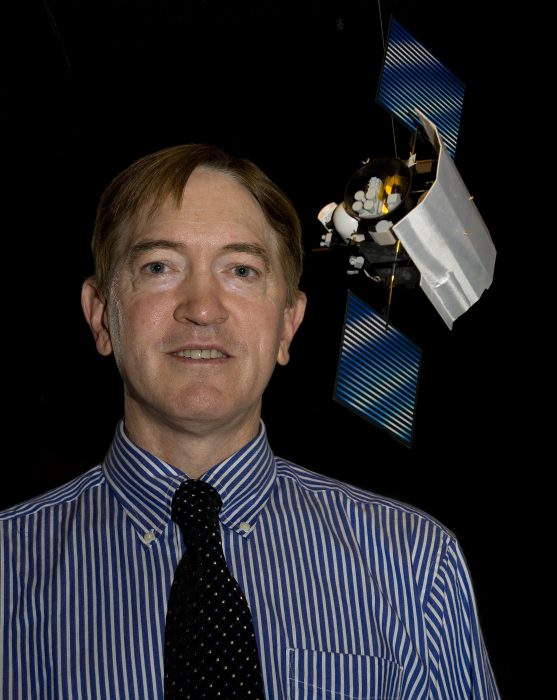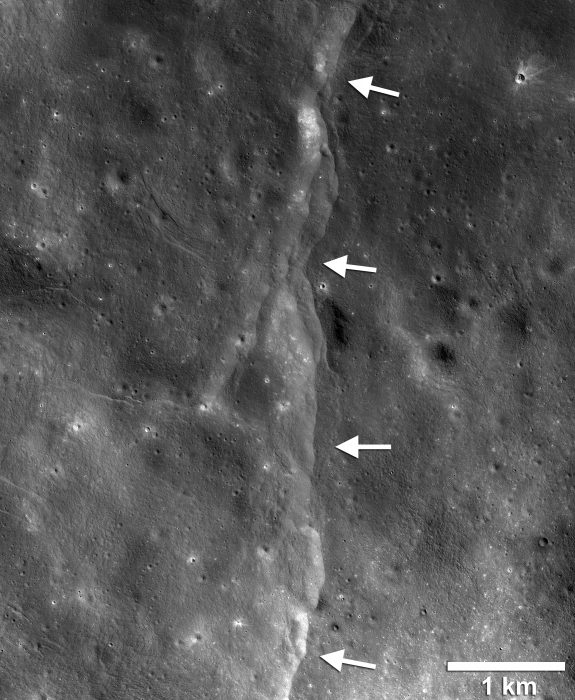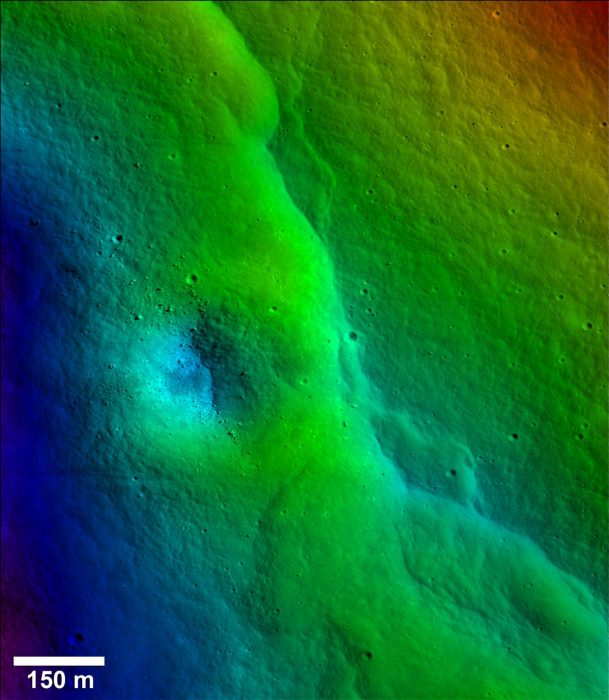The moon may be shrinking but our knowledge of it is growing
Dr. Thomas Watters is 2019’s Smithsonian Distinguished Scholar in the Sciences.

Dr. Thomas Watters
Dr. Thomas R. Watters, Senior Geologist at the National Air and Space Museum’s Center for Earth and Planetary Studies, has been chosen to receive the 2019 award. First given in 2000, the Smithsonian Distinguished Scholar Award celebrates excellence in all branches of Smithsonian scholarship by honoring the sustained achievement of two outstanding Smithsonian scholars each year—one in the sciences and one in the humanities. The winners are asked to give a talk on their work at an annual reception where they are recognized with a medal and a contribution to their research fund.
Dr. Watters was selected as this year’s recipient for research that has led to significant achievements in the understanding of tectonic features and crustal processes on the terrestrial planets; involvement with a number of spacecraft missions; mentoring of early-career scientists; and his contributions to the exhibition and public outreach goals of the Institution. He has investigated and modeled tectonic landforms on the Earth, Mercury, Mars, the Moon, and the asteroid Eros, with the goal of increasing our comprehension of their thermal and mechanical evolution.
Highlights of his recent work include the discovery of very young lunar faults that indicate recent contraction of the Moon (the so-called “Shrinking Moon.”) Dr. Watters has also been active in applications of radar sounding to Mars. A major discovery was deep subsurface reflectors in the Medusae Fossae Formation, located along the equator of Mars, which allowed the first evaluation of the electrical properties of these enigmatic deposits. His work concluded that these deposits might be ice-rich. Deep subsurface reflectors also were found in the deposits of Meridiani Planum, where the Opportunity rover operated for well over a decade. These discoveries may well have implications that might be used to support human exploration.

Thousands of young, lobate thrust fault scarps have been revealed in Reconnaissance Orbiter Camera images (LROC). Lobate scarps like the one shown here are like stair-steps in the landscape formed when crustal materials are pushed together, break and are thrust upward along a fault forming a cliff. Cooling of the still hot lunar interior is causing the Moon to shrink, but the pattern of orientations of the scarps indicate that tidal forces are contributing to the formation of the young faults. (NASA/GSFC/Arizona State University/Smithsonian)

A prominent lobate fault scarp in the Vitello Cluster is one of thousands discovered in Lunar Reconnaissance Orbiter Camera images (LROC). Topography derived from the LROC Narrow Angle Camera (NAC) stereo images shows a degraded crater has been uplift as the fault scarp has formed (blues are lower elevations and reds are higher elevations). Boulders in the crater have aligned in rows that parallel the orientation of the fault scarp. (NASA/GSFC/Arizona State University/Smithsonian)
Watters has published 82 peer-reviewed papers as lead or co-author, with 16 in the high-profile journals Science, Nature, and Nature Geoscience. A number of his articles have received national and international attention in The New York Times, The Washington Post, and Science News. He was the curator of “Earth Today: A Digital View of Our Dynamic Planet” (which received a Smithsonian Exhibition Award), and contributed a major update to the Mercury Unit in NASM’s “Exploring the Planets” gallery.
Dr. Watters will present his lecture, “The Shrinking Moon: A Story of the Science of Apollo and the Lunar Reconnaissance Orbiter” on Monday, June 3, at 10:45 a.m., in the National Museum of the American Indian’s Rasmuson Theater. Light refreshments will be served beginning at 10:00 a.m. The lecture will be webcast for those who cannot attend in person.
Watch the webcast:
Posted: 20 May 2019
-
Categories:
Administrative News , Air and Space Museum , Kudos , News & Announcements , Science and Nature






